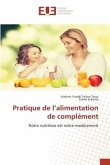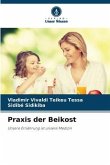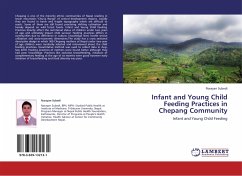ANJE practices vary according to culture and region, and evolve over time. Work assessing the relationship with children's nutritional status has been carried out using scores rating good ANJE practices such as breastfeeding, meal diversity and meal frequency. The aim of this study was to analyze factors associated with the practice of complementary feeding through data from the DHS 2018. This was a cross-sectional survey of 2163 children aged 6 to 24 months living in urban and rural areas, whose parents were asked about their children's complementary feeding practices. The DHS 2018 base was used for secondary analysis. The practice of dietary diversification is a component of complementary feeding and was retained as the dependent variable. The other variables were considered as the independent ones. Our results clearly show that a large proportion of children under the age of 2 miss out on one of the key indicators in feeding practice, namely minimum dietary diversity.
Bitte wählen Sie Ihr Anliegen aus.
Rechnungen
Retourenschein anfordern
Bestellstatus
Storno








